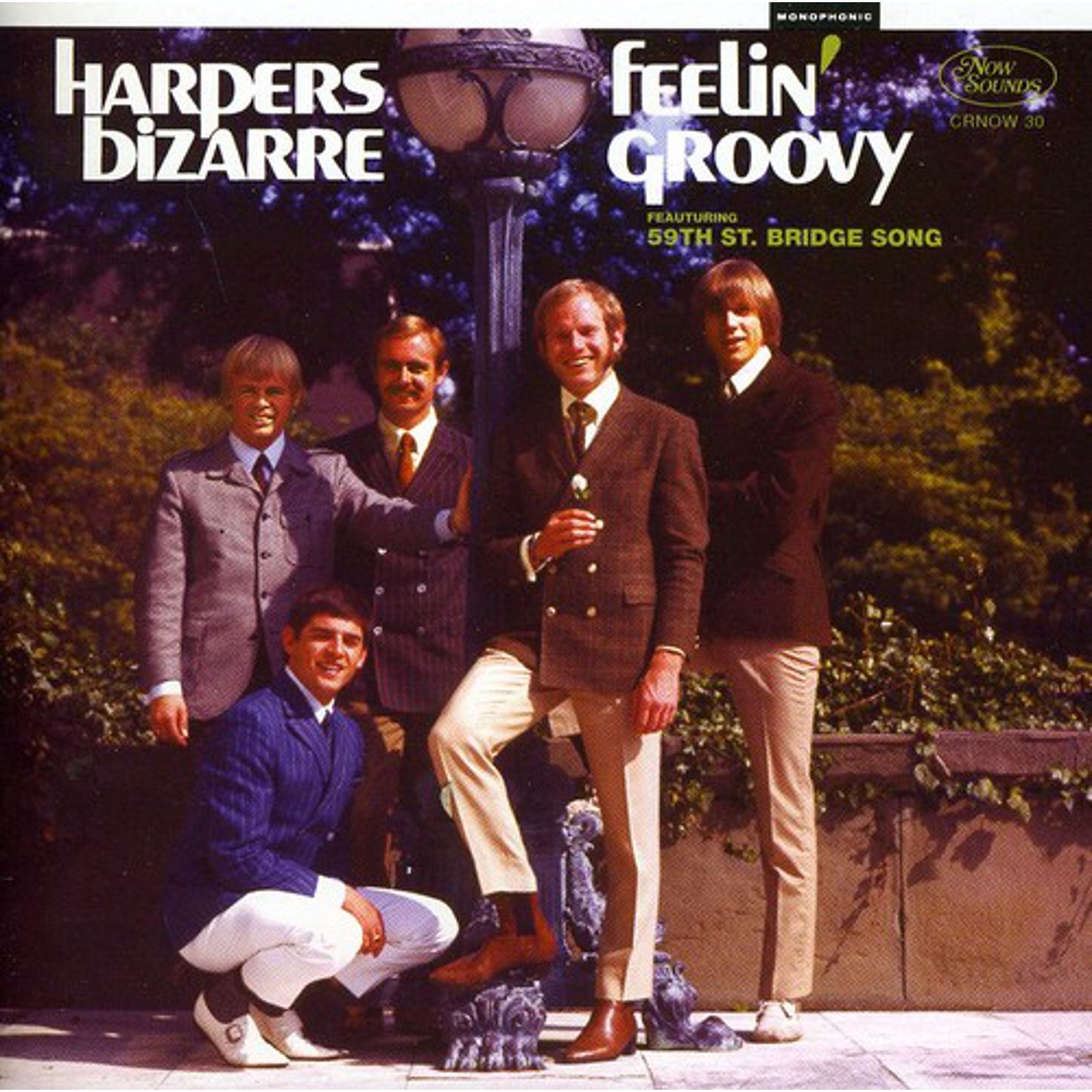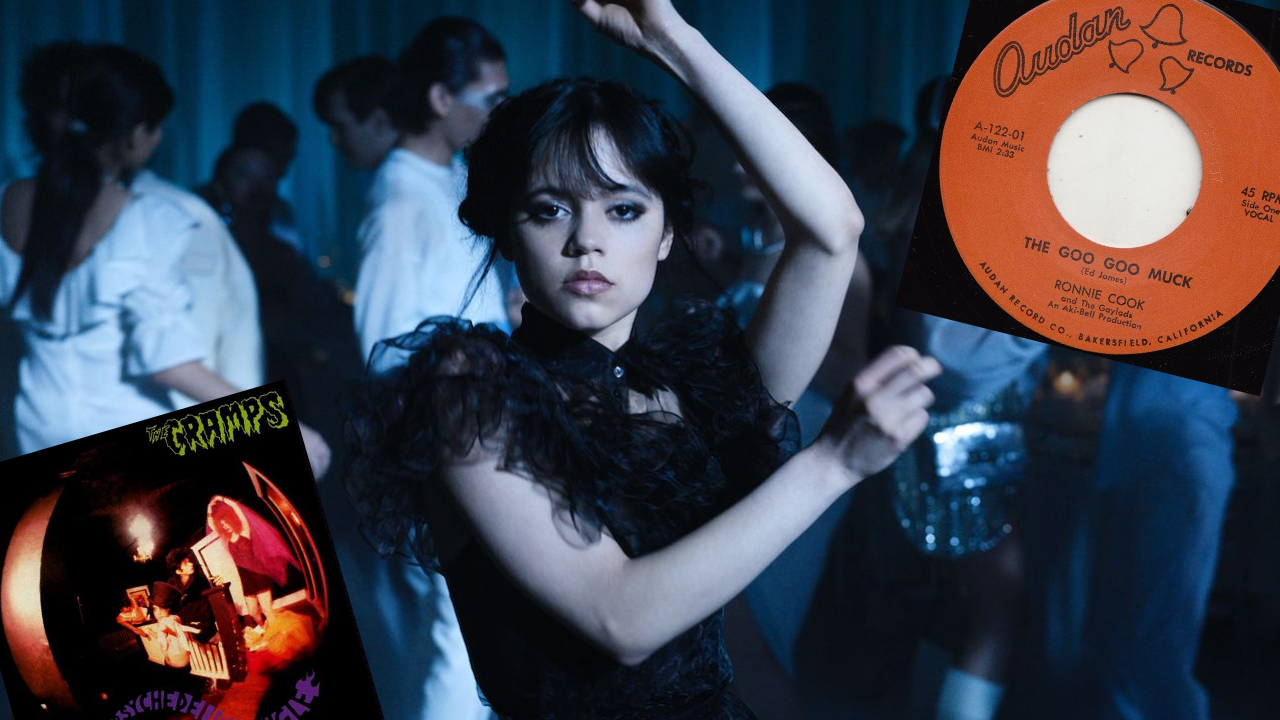The history of Goo Goo Muck is as murky as the song itself but it might just start with The Addams Family. Way before it was a kooky 60s TV series, or the hit Hollywood movie franchise that spawned Netflix’s Wednesday, The Addams Family was a cartoon in The New Yorker magazine through the 1940s and 50s.
A dark satire of family life in middle-class America, its creator Charles Addams had worked with famed sci-fi author Ray Bradbury on a project about a family of monsters. When it didn’t happen, Addams did it himself and The New Yorker published comic strips featuring the family until 1964 when the TV series was launched.
While the mainstream US media showed an apple-pie America filled with happy families with white picket fences and perfect teeth, The Addams Family gleefully poked fun at these idealised visions of America and tapped into weird America: the dark flipside of the image shown on TV and cinema ads.
It spilled into music too. Soon the rock’n’roll business was embracing The Weird, with bands creating their own bizarre, daft and horror-themed records. The late 50s and early 60s saw the release of a load of wild rock’n’roll records influenced by late-night B-movies and horror-flick drive-ins: songs about martians, cannibals and The Blob, with titles like Werewolf, Green Fuz and Goo Goo Muck.
Who released the original Goo Goo Muck (1962)?
Goo Goo Muck was a novelty hit by Ronnie Cook and The Gaylads, released in 1962 on the Audan Record Company, a small label based in Bakersfield, California.
Ronnie Cook was a Bakersfield native and R’nB singer who fronted a band called The Diamonds, and had released a single, Doin’ Time (1961), on Lew Bedell’s Dore label. Lew Bedell was a comedian-turned-label-boss and Dore became famous for novelty hits – record producer Lou Adler and A&M records founder Herb Alpert got their start in the music business as A&R men for Dore.

Ted Templeman is better known now as the producer behind The Doobie Brothers, Van Halen, Van Morrison and more. The Tikis recorded a version of Simon & Garfunkel’s The 59th Street Bridge Song (Feelin’ Groovy) but released it under the name Harpers Bizarre because it was so different to their usual material. When it became a hit in 1967, The Tikis ceased to exist and Harpers Bizarre became the focus. Ed James left shortly after their first album but returned for their final release, Harpers Bizarre 4, which also featured Ry Cooder on guitar.
The Gaylads were a Bakersfield rock 'n roll band with Latin influences. Goo Goo Muck was written by Ronnie Cook and Ed James. Ed James later became a member of The Tikis, a San Francisco-based psych-pop band that included Ted Templeman on drums, while Ronnie Cook found success with LA soul outfit the Superbs, who had a hit single with Baby Baby All The Time in 1964, and Doo-wop act the Riverias.
Goo Goo Muck's melody and sax part owes a lot to New Orleans, the 1960 debut single by Gary U.S. Bonds that had been a hit on both sides of the Atlantic. It’s likely that to all concerned, Goo Goo Muck was just a goof – bit of daft fun, taking a hit song and giving it lyrics about a teenager who turns into a monster at night: “When the sun goes down, and the moon comes up/I turn into a teenage Goo Goo Muck/I cruise through the city and I roam the street/Looking for something that is nice to eat”.
Whatever the reasons, Ronnie Cook and The Gaylads never made another record together.
The Cramps' Goo Goo Muck (1981)
The Cramps were formed by singer Lux Interior (real name: Erick Lee Purkhiser) and guitarist Poison Ivy (real name: Kristy Wallace) in 1976.
Hitting New York at the height of CBGBs punk, The Cramps played music from the all-American nightmare – a Frankenstein’s monster stitched together out of the blues, doo-wop, rockabilly, country, R&B, exotica, garage rock, psychedelia, instro-surf and more. They were music obsessives, crate-diggers who collected long-forgotten records and re-tooled them for the 70s and 80s, borrowing intros, riffs, and chord patterns from obscure tracks and turning them into something unique.
Their covers of lost rock’n’roll, garage and country classics – Charlie Feathers’ Can’t Hardly Stand It, Jack Scott’s The Way I Walk, and the Trashmen’s Surfin’ Bird – have become the definitive versions. And The Cramps were fond of adding a smutty double-meaning to the songs they covered or adapted: Ivy borrowed the intro chords of the Instrumentals’ Chop Suey Rock and Lux rewired the lyrics from Dall Raney and the Umbrellas’ 1964 single Can Your Hossie Do the Dog and turned it into The Cramps' far more salacious song Can Your Pussy Do the Dog?
Which explains their interest in Goo Goo Muck.
What does Goo Goo Muck mean?
Goo Goo Muck was perfect for The Cramps who set about subverting the meaning of the song a little. The Cramps took the rather quaint Ronnie Cook and the Gaylads original and transformed it into a sinister, Duane Eddy-eque nightmare for their second album, Psychedelic Jungle.
In the Ronnie Cook version, Goo Goo Muck was some kind of monster – a creep roaming the streets at night, looking to kill. In The Cramps' version the original lyric “I’m the night head-hunter looking for a head” becomes “looking for some head” and suddenly, the lines “looking for something nice to eat” take on a whole different meaning.
In the Ronnie Cook version, the singer becomes a killer at night. In The Cramps version, they're a horny teenager, less interested in killing than they are in coming. "Goo goo muck" then becomes more of a double-entendre: it could be the name of the monster, but it could also be ejaculate ("You better duck/When I show up/The goo goo muck").
It's all part of the twisted world of The Cramps and Tim Burton's Wednesday. "The Cramps are perfect for Wednesday," says the series music supervisor Jen Malone. "They’re in her headspace, like Siouxsie and Joy Division. I’m a former Goth. To work with music I love, to find that right moment — the track had to be fun, quirky and lend itself to Wednesday’s personality."
The Cramps saw their music as a form of magic. “Sometimes we get accused of stealing things from other people,” said Lux. “But we look at these things as magic.”
It's a subject guitarist Kid Congo Powers touches on in his autobiography Some New Kind Of Kick, published earlier this year. “The Cramps believed they were a magical entity,” he wrote. “They believed in psychic phenomena, ghosts, and spirits. And that all misfits and freaks, like them, were people who came from some other planet… To Lux and Ivy, any true non-conformist was viewed as a magical person.”
And if that’s not the message of Wednesday, I don't know what is.
So who owns the song now?
According to Billboard, for years the publishing rights to Goo Goo Muck sat with a producer and publisher called Dave Bell. Dave was always wheeling and dealing ("He'd make a million and then lose a million") and, to pay off a debt, he gave ownership of Goo Goo Muck to Jim Shaw, a former member of Buck Owen's Buckaroos. "[Bell] had a lot of gospel songs," says Shaw. "He’d become very religious, and that song didn’t fit into what he wanted to do.”
Shaw licensed the song to Netflix for a standard fee and then watched when streams jumped from 2,500 streams the day before the premiere of Wednesday to 134,000 five days later. Shaw will take the performance royalties and whoever owns the Cramps recording, originally released on IRS, will also get a mechanical royalty.
"It’s really cool," says Shaw. "That’s what every songwriter and publisher hopes will happen. It’s what everybody dreams.”
Wednesday is available to stream on Netflix now.

